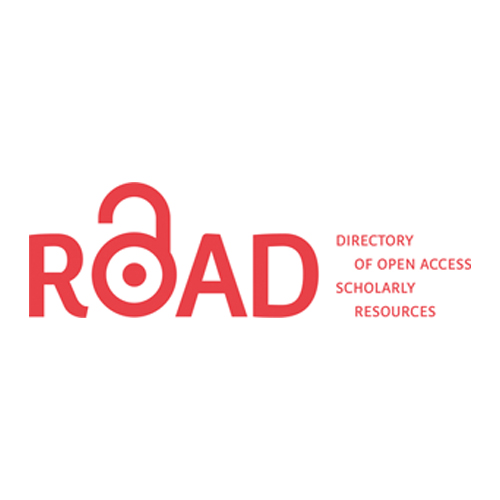Justice access for rural women
Abstract
One-fourth of all people in the world are rural women.1. They make up a sizable section of the agricultural labour force, produce most of the food harvested, particularly in subsistence farming, and do the majority of the unpaid care work in rural regions.2. Their efforts are crucial to the growth of regional and global economies as well as to the prosperity of their families and communities.
While certain nations have made strides toward encouraging gender equality, in many others, particularly in rural and agricultural regions, the condition of women is substantially worse than that of males. Rural women still struggle to access economic and productive resources like land. Fewer than 5% of people own agricultural land in North Africa and West Asia, compared to an average of 15% of women owning agricultural property in Sub-Saharan Africa.
Downloads
References
• Accra Expert Meeting, 2011, Final report http://www.un.org/womenwatch/daw/csw/-csw56/egm.htm
• Abregu, M. 2001. Barricades or Obstacles. The Challenges of Access to Justice http://siteresources.worldbank.org/BRAZILINPOREXTN/Resources/3817166- 1185895645304/4044168-1186409169154/02ConferenceProceedings.pdf
• Chiongson, R.A. and al., 2011. Rule of Law and Justice in Achieving Gender Equality. World Development Report 2012. Background paper.
• Commission on the Status of Women to focus on rural women, their contributions - Challenges during fifty-sixth session at Headquarters, 27 February – 9 March 2012 - Economic and Social Council, 24th February 2012, Press release http://www.un.org/womenwatch/daw/csw/56sess.htm
• Ikdahl, I, et al. 2005. Human rights, formalization and women’s land rights in southern and eastern Africa. Noragric Report no 26
• FAO (Food and Agriculture Organization of the United Nations), 2005. Gender and land compendium of country studies http://www.fao.org/docrep/008/a0297e/a0297e00.htm
• FAO, 2009. Tackling Legal Empowerment: the Farmer Field and Life School Approach
(http://www.fao.org/fileadmin/templates/dimitra/pdf/fls_legal_empowerment.pdf )
• FAO, 2010. Gender dimensions of agricultural and rural employment: Differentiated pathways out of poverty. http://www.fao- ilo.org/publications3/workshop/-presentations010-/en/#c101892
• FAO, 2010. Gender and Land Rights Understanding complexities, adjusting policies
http://www.fao.org/economic/es-policybriefs/briefs-detail/en/?no_cache=1&uid=40497
• FAO, 2010. Gender and Rural Employment Policy Briefs: http://www.fao.org/docrep/013/-i2008e/i2008e00.htm
• FAO 2010. “Gender and Land Rights Database.” http://www.fao.org/gender/landrights
• FAO, 2011. The State of Food and Agriculture, 2010-11. Women in agriculture: closing the gender gap for development
• FAO, 2011. DIMITRA Community Listeners Clubs. Stepping Stones for Action in Rural Areashttp://www.fao.org/docrep/014/am604e/am604e.pdf
• FAO, forthcoming. Guidance Note: Integrating the right to adequate food into food and nutrition security programmes
• R. Knight, 2010. Statutory recognition of customary land rights in Africa. An investigation into best practices for lawmaking and implementation. FAO Legislative Study 105.
• C. Tanner 2002: Law Making in an African Context: the Mozambican Land Law. FAO Legal Papers Online, No 26. www.fao.org/legal
• UN Women, 2011-12. Progress of the World's Women: In Pursuit of Justice http://progress.unwomen.org/pdfs/EN-Report-Progress.pdf
• M.Vidar, D. Bojic, C. Tanner, 2012. Legal Empowerment of Rural Poor: A Pathway out of Poverty, in Innovations in the Rule of Law. The World Justice Project.
NOTES
Economic and Social Council, 24th February 2012, Press release. Commission on the Status of Women to focus on rural women, their contributions - Challenges during fifty-sixth session at Headquarters, 27 February – 9 March 2012 - Economic and Social Council, 24th February 2012, Press release
FAO The State of Food and Agriculture, 2010-11. Women in agriculture: closing the gender gap for development
FAO, 2011 Rural Women and the Millennium Development Goals.
Ibid, FAO elaboration.
Ibid
UN WOMEN, 2011-12. Progress of the World's Women: In Pursuit of Justice
Ibid
See World Bank/FAO/IFAD, 2010. Gender in Agriculture Sourcebook.
FAO, 2010. Gender and Land Rights Understanding complexities; adjusting policies http://www.fao.org/economic/es-policybriefs/ briefsdetail/en/?nocache=-1&uid=40497
FAO, 2010. Gender dimensions of agricultural and rural employment: Differentiated pathways out of poverty. http://www.fao.org/docrep/013/-i1638e/i1638e.pdf
UNRISD. 2010. Gender Inequalities at Home and in the Market
More information on decent rural employment is available on the joint FAO-ILO website: http://www.fao-ilo.org/
This is because ownership over land or different assets (i.e., livestock) is a frequent criterion for membership; other barriers include increased work burden due to women’s both productive and reproductive role and responsibilities, illiteracy etc.
For example, in Swaziland or Democratic Republic of Congo.
For example, some statutory land laws recognize the existing customary land rights (e.g. Mozambique, South Africa, Uganda and Tanzania). In some countries, statutory laws have recognized the geographic domain and policy scope of the customary judiciary system and customary dispute resolution bodies are embedded in the formal body (See: World Bank/FAO/IFAD, 2010. Cit., Module 4)
FAO, 2005. Gender and land compendium of country studies.
FAO The State of Food and Agriculture, 2010-11. Women in agriculture: closing the gender gap for development
A World Bank study found that in Kenya, a land claim in an inheritance case through formal legal systems can cost up to $780.
Abregu, M. 2001. Barricades or Obstacles. The Challenges of Access to Justice
Chiongson, R.A. and al., 2011. Rule of Law and Justice in Achieving Gender Equality. World Development Report 2012. Background paper.
Such legislation should also be in line with the ILO Declaration and the Fundamental Principles and Rights at Work, and put the concept of ILO’s Decent Work Agenda into practice.
FAO Integrated Country Approach to the promotion of DRE in Malawi and Tanzania: http://www.fao-ilo.org/ilo-dec-employ/ica/malawi-and-tanzania/en/
R. Knight, 2010. Statutory recognition of customary land rights in Africa. An investigation into best practices for lawmaking and implementation. FAO Legislative Study 105, p. 7.
FAO, 2005. Gender and land compendium of country studies.
For example, the Tanzanian Village Land Act (1999) states that “Any rule of customary law or any such decision in respect of land held under customary tenure shall be void and inoperative and shall not be given effect to by any village council or village assembly or any person or body of persons exercising any authority over village land or in respect of any court or other body, to the extent to which it denies women, children or persons with disability lawful access to ownership, occupation 0r use of any such land”(section 20.2). Also, the Village Land Council, competent for dispute settlement, shall consist of seven people, three of whom must be women (section 60). Some states which formally recognize legal pluralism in their constitutions, such as Mozambique, condition the recognition of customary law by phrases such as, “provided that these (various normative systems) do not contradict the values and fundamental principles of the Constitution” (Article 4 of the 2004 Constitution of the Republic of Mozambique).
In the field of land, FAO Technical Guide on Governing Land for Women and Men is a useful instrument that can be used by national policy makers when revising land policy and legislation, and drafting regulations and guidelines (available at: http://www.fao.org/docrep/017/i3114e/i3114e.pdf).
Christopher Tanner 2002: Law Making in an African Context: the Mozambican Land Law. FAO Legal Papers Online, No 26. www.fao.org/legal
A FAO Agri-Gender Database includes useful tools and methodologies, which show how gender-sensitive approaches can be incorporated into standard agricultural data collection exercises (http://www.fao/gender/agrigender/en/ Another useful tool is the FAO Gender and Land Rights Database (http://www.fao.org/gender/landrights).
FAO, March 2009. Tackling Legal Empowerment: the Farmer Field and Life School Approach (http://www.fao.org/fileadmin/templates/dimitra/ pdf/flslegalempowerment.pdf)
M.Vidar, D. Bojic, C. Tanner, 2012. Legal Empowerment of Rural Poor: A Pathway out of Poverty in Innovations in the Rule of Law, The World Justice Project.
FAO, forthcoming. Guidance Note: Integrating the right to adequate food into food and nutrition security programmes
FAO, 2011. DIMITRA Community Listeners Clubs. Stepping Stones for Action in Rural Areas






